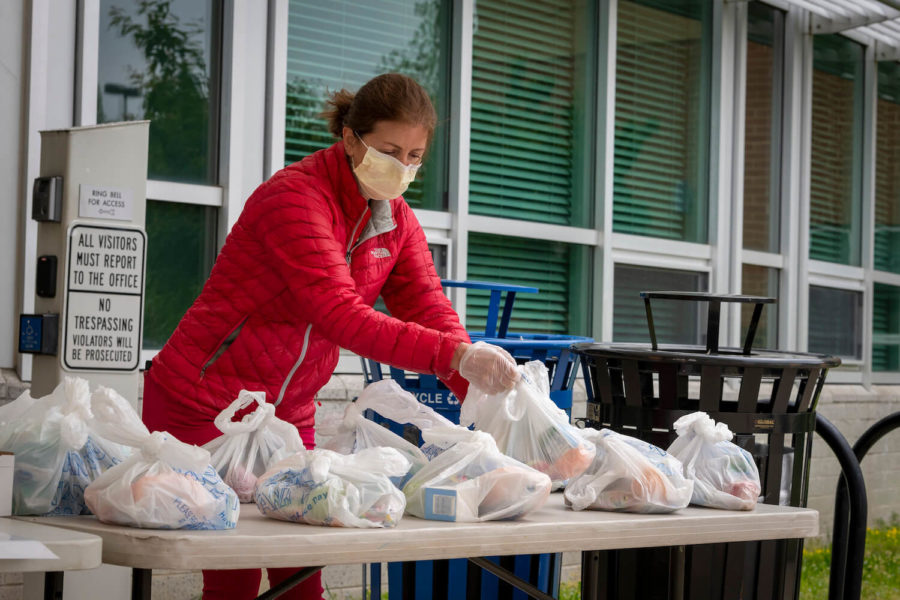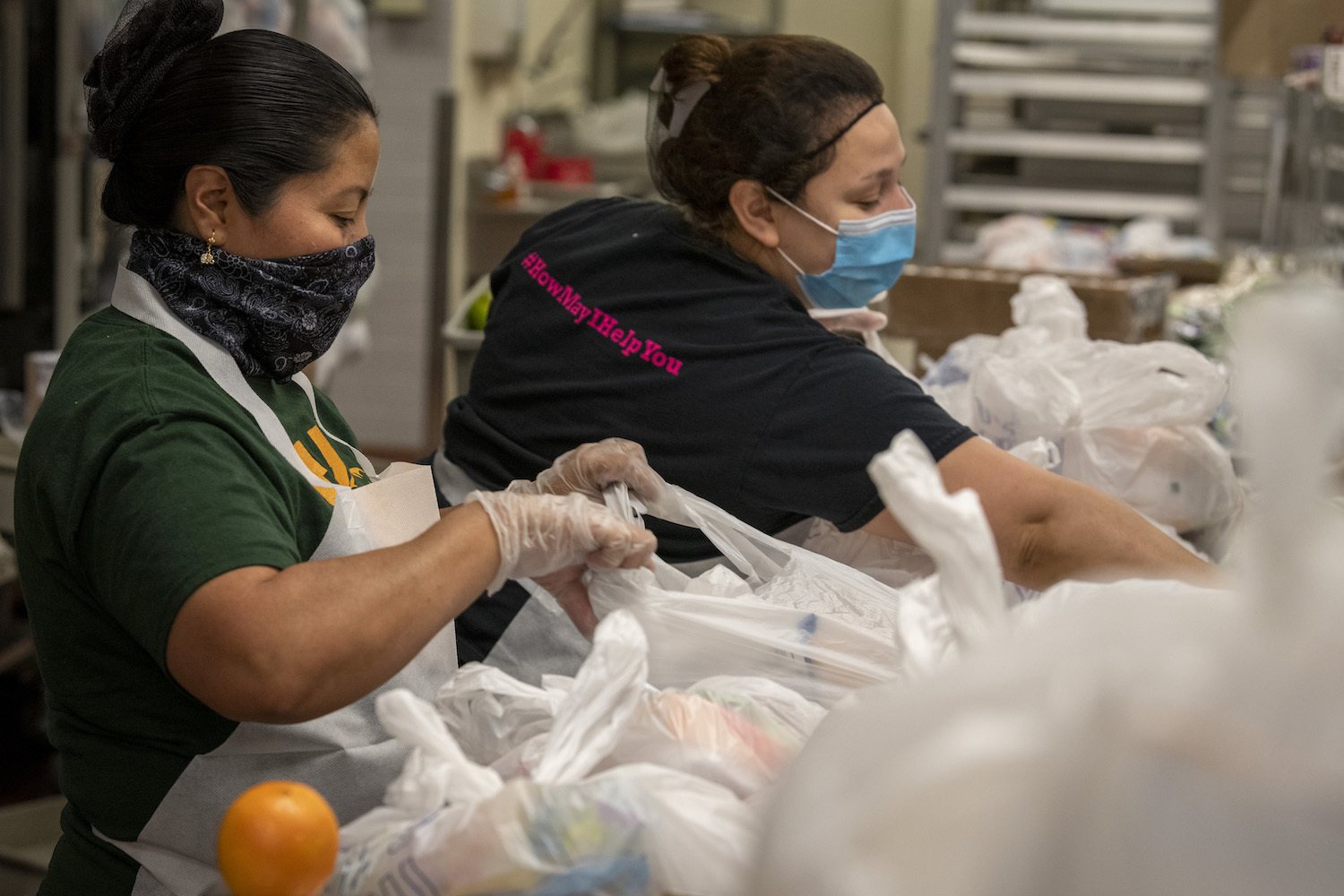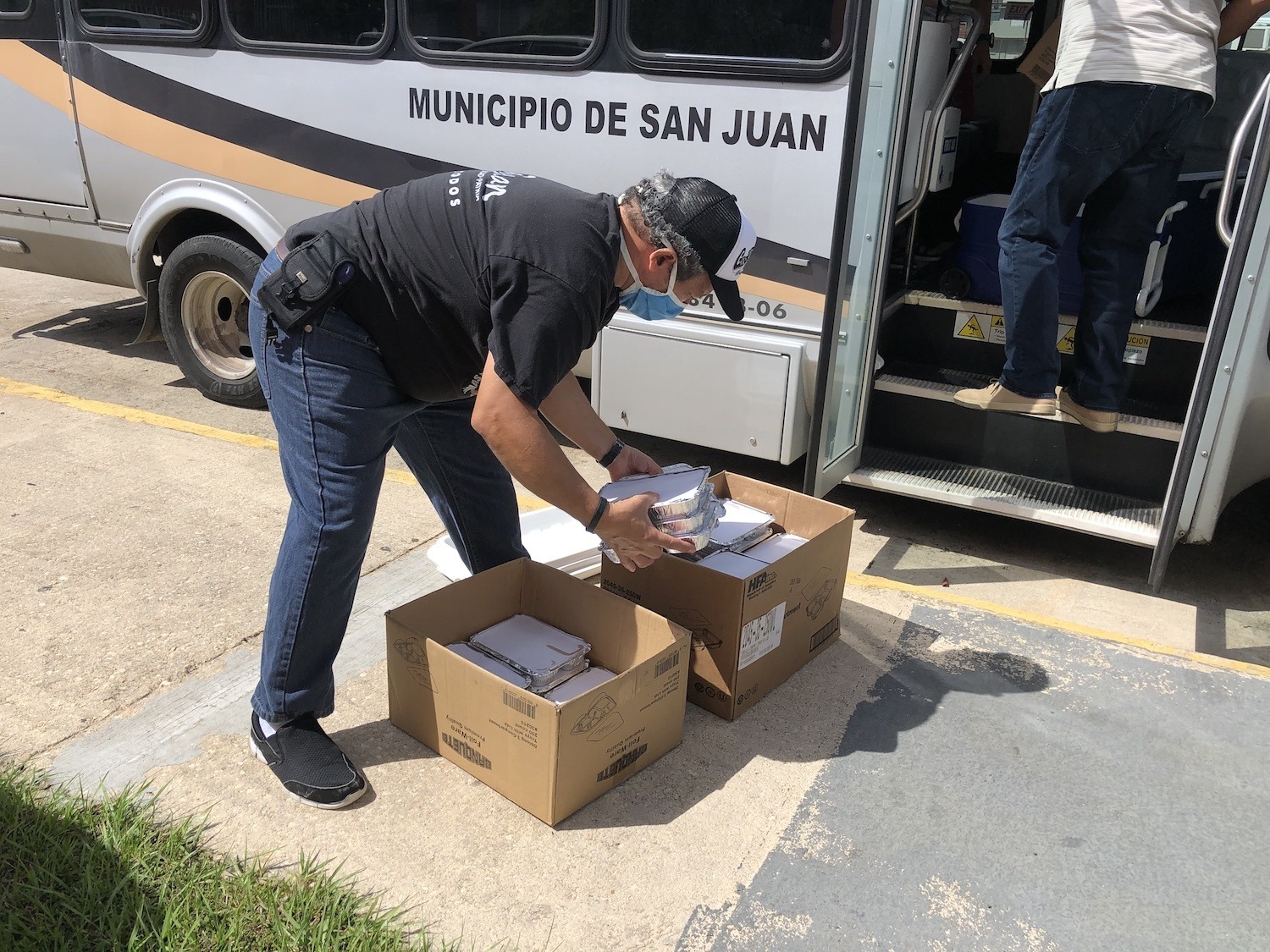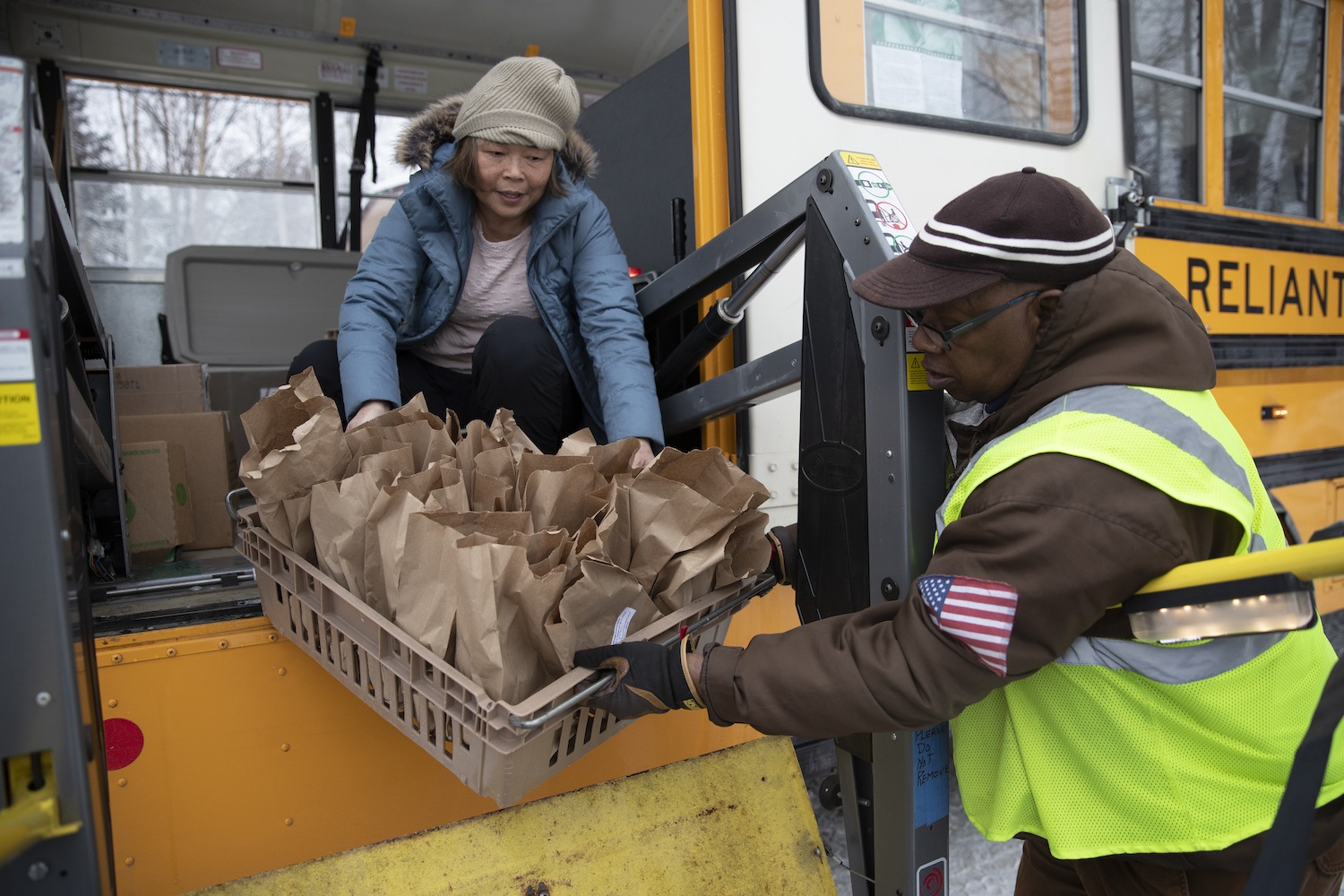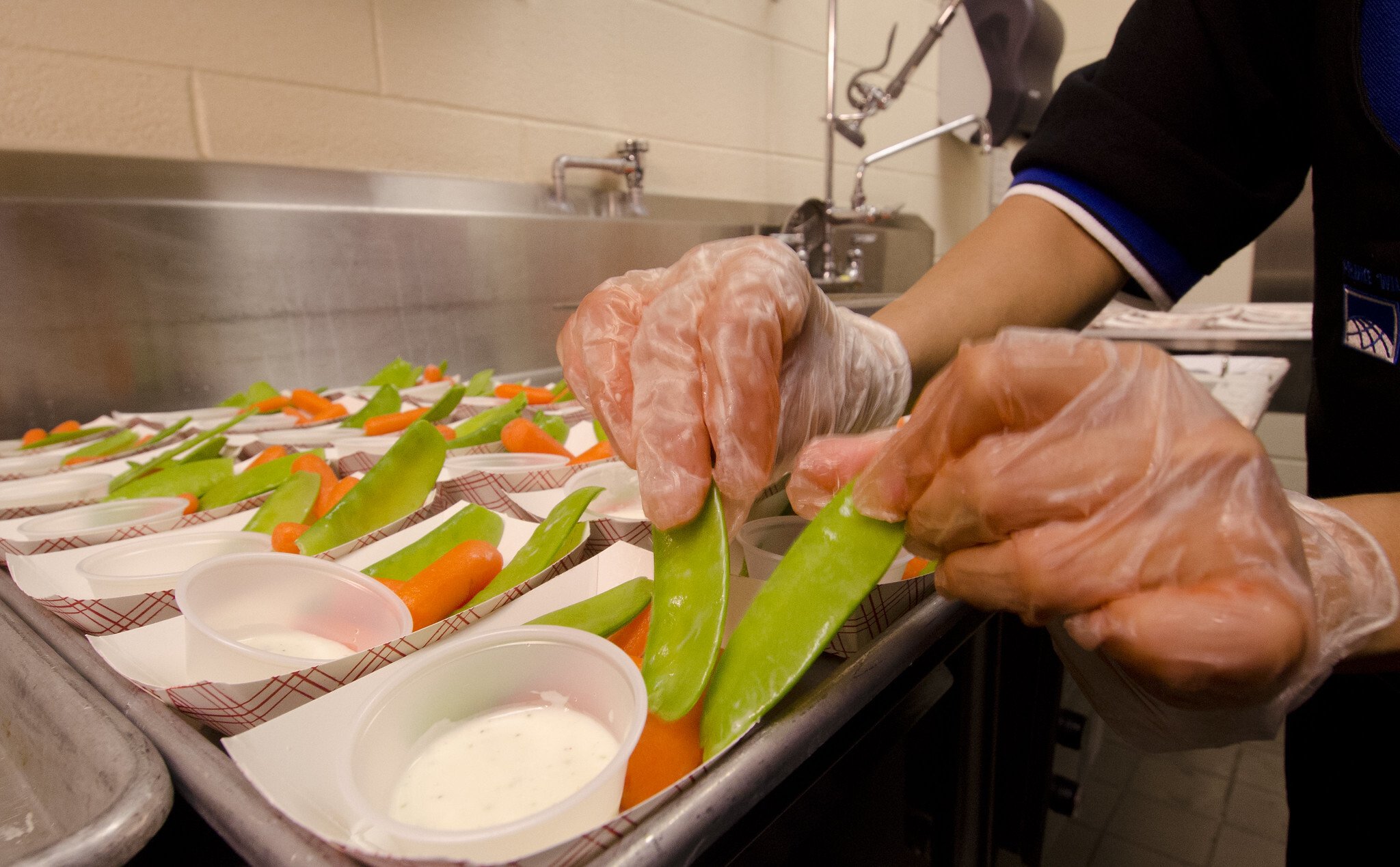Nutrition directors get the green light to serve lunch in classrooms or via grab-and-go, but some say more flexibility is needed.
The uncertain future of school meals became much clearer yesterday, after the Department of Agriculture (USDA) announced that it would extend crucial waivers to allow for in-classroom dining and continued grab-and-go service through June 30, 2021.
“As the country re-opens and schools prepare for the fall, a one-size-fits-all approach to meal service simply won’t cut it,” said Secretary Sonny Perdue in a press release. “The flexibilities announced today give states, schools, and child care providers the certainty they need to operate the USDA child nutrition programs in ways that make sense given their local, on-the-ground situations and ensure America’s children can count on meal service throughout the school year.”
Last week, we reported that school nutrition directors across the country were struggling to prepare for meal service for the upcoming academic year due to regulatory uncertainty, among other Covid-related challenges. USDA sets detailed standards on how school breakfast and lunch must be served in schools that participate in the National School Lunch Program. This includes broad guidelines like nutrition standards and reimbursement rates for kids who qualify for free lunch, as well as more particular requirements like mandatory group dining and set meal service times.
“I need a waiver that says I can serve multiple meals. So if the kids are only coming to school one day a week, I can give them a meal pack to take home for the other days until they come back.”
Since the coronavirus pandemic was declared, USDA has issued a handful of waivers to ease these rules, making it easier for schools to distribute food during the public health emergency. Right now, families can take food to eat at home and parents can pick up meals without bringing their children to campus—two things that aren’t permitted normally. Some schools are offering summer food service with the help of these flexibilities, but until yesterday, USDA hadn’t indicated whether they would extend them through the next school year.
“This is amazing,” says Alexandra Emmott, culinary manager at San Francisco Unified School District. “It’s just kind of unprecedented, because up to this point, we’ve been working with waivers that are [issued] out one month at a time, which makes it really hard to plan what you’re going to be able to do. All of those waivers are just absolutely essential to maintaining grab-and-go meal service that we’re doing right now.”
One waiver in particular could make in-classroom meal service—a possibility that many lunch directors are exploring—much more manageable. In an effort to reduce food waste, USDA normally requires high school lunch rooms to give students the option to decline certain components of a school lunch—such as the milk or meat or grains. This is easy to do in a lunch line, but it’s far more impractical when you’re customizing hundreds of meals before delivering them to individual classrooms around a campus. One of the USDA’s new waivers issued lifts this mandate—a small tradeoff between sustainability and efficiency.
“What is it all going to look like? How can we quickly adapt our programs? It’s going to be a challenge for all of us for sure.”
Despite all these changes, school nutrition directors say there’s still a lot more than USDA can do to help them feed kids next year. Betti Wiggins, nutrition services officer for the Houston Independent School District, is planning for the possibility that kids attend school on alternate days. Meal service could be a lot more streamlined if USDA permitted students to pick up a week’s worth of breakfasts and lunches at a time.
“I need a waiver that says I can serve multiple meals,” Wiggins says. “So if the kids are only coming to school one day a week, I can give them a meal pack to take home for the other days until they come back.”
The School Nutrition Association (SNA), which represents nutrition directors, is lobbying USDA to grant an additional flexibility that would allow all schools to serve free meals to kids. Normally, only schools that meet a high threshold of free lunch participation are allowed to do that. But these aren’t normal circumstances: With unemployment rolls swelling, more families are qualifying for free lunch, and a waiver like this would significantly cut down paperwork and bureaucracy. It would also eliminate the need to collect lunch money from kids.
While the waivers go a long way in helping schools chart a path forward for service next year, there’s still a lot up in the air—whether instruction will take place in-person at all, whether supply chains can meet schools’ needs, whether districts can access PPE for nutrition staffers, and more.
“There’s so much uncertainty,” Emmott says. “What is it all going to look like? How can we quickly adapt our programs? It’s going to be a challenge for all of us for sure.”
